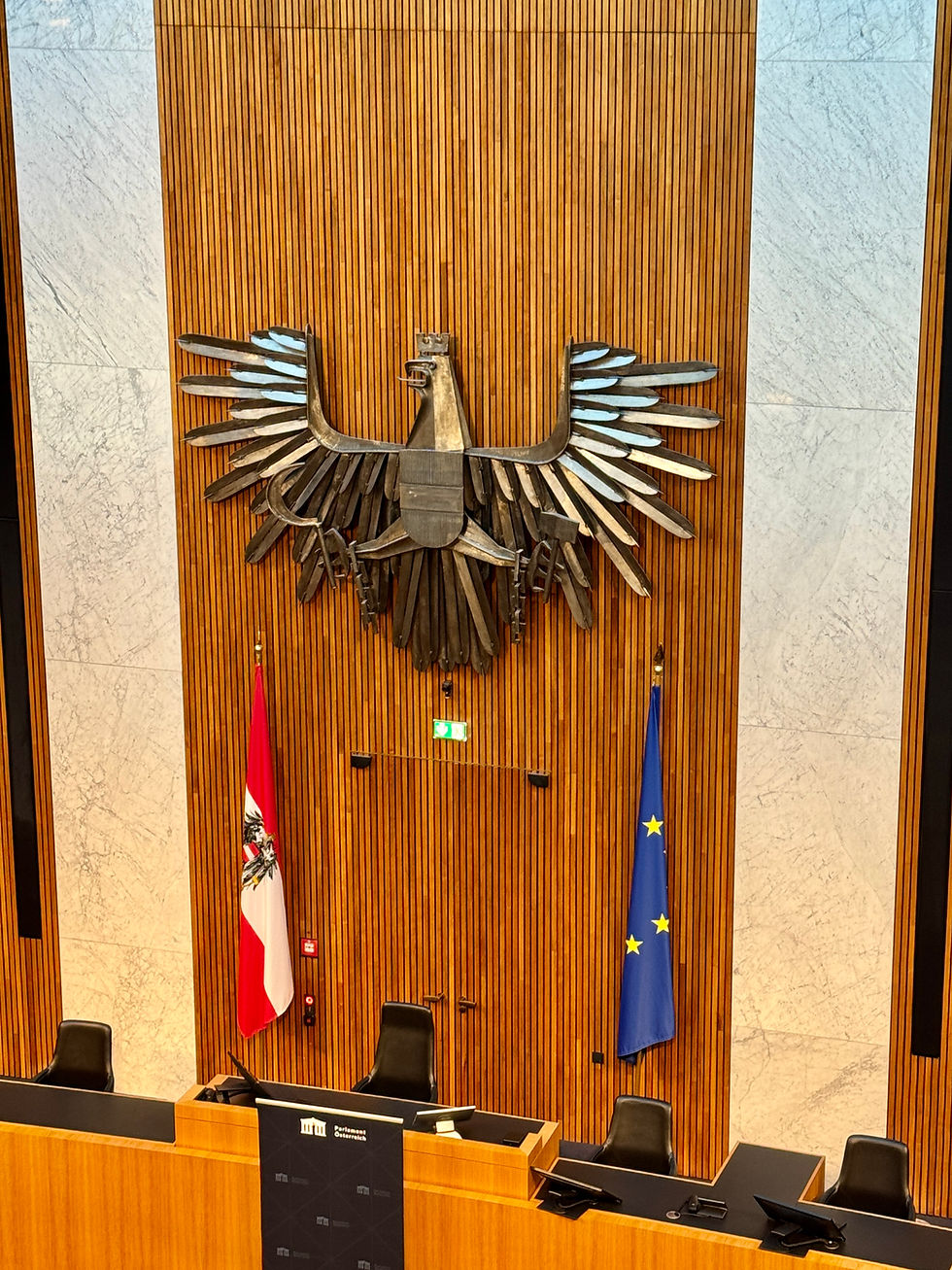Uhrenmuseum - Fantastic Watches in a Barocco Palace in the Heart of Vienna
- Mika Vepsalainen
- Jan 14, 2023
- 3 min read
Join us for a visit to the Palais Obizzi in the centre of Vienna and see one of the most brilliant historical clock collections in the world.

Palais Obizzi in Vienna's Inner City was built in 1684. A few years later, in 1690 the Commander of the City Guard, Ferdinand Marchese von Obizzi acquired the house and had it expanded into what the Palais is today. He added a floor and furnished the interior with magnificent wall paintings and stucco work. In the 18th century the palacde had many owners including Counts Marzani who lived there for twenty seven years till 1826.
The city of Vienna bought the building in 1901 in order to demolish what was seen as a traffic obstacle for urban development. Luckily, the palace stayed intact and in 1917, the newly founded Vienna Watch Museum found a home there.
The museum’s original treasures are based on two private collections: that of the Upper Austrian middle-school teacher, Rudolf Kaftan and anothr of the writer Marie von Ebner-Eschenbach. After the City bought his collection in 1917, Kaftan was nominated the manager of the newly established museum. In the same year, the heirs of the writer Marie von Ebner-Eschenzach offered the City their valuable inheritance. Thanks to the donations from Karl von Škoda and Bernhard Wetzler, the City acquired the treasure and, with further financing from the Association of Friends of the Clock Museum, the museum opened on 30 May 1917 in Kaftan’s apartment in the third floor. After Kaftan’s death in 1961 the museum became a branch of the Wien Museum.
During the Nazi period, many Jews were forced to sell their watches or they were expropriated and a number of them ended up in the museum. Surprisingly, the restitution of some of the watches to the legal successors of the original owners seems to be still pending.
During WWII, the museum was closed and the collection was housed in Lower Austria but unfortunately, many clocks were lost. For instance only 40 of the 230 watches from the original very valuable von Ebner-Eschenback collection ever returned to the museum after the war.
Today the museum is spread over three floors according to the centuries and it tells us a story of scientific advances and technological precision, but also of social transformation and design trends in the decorative arts with picture clocks with hidden dials, fascinating astronomical clocks, watches, luxurious pendant jewellery, and the artful clocks of the Biedermeier and Belle Époque. With over 3000 clocks in its collection, the museum is among the biggest in Europe.
Among the highlights of the museum, the world-famous Laterndl style regulations are witnesses to the art of Viennese clockmaking. The smallest clock is a Zappler and fits under a thimble; the heaviest example is the tower clock of St. Stephen’s Cathedral made from solid cast iron. The biggest object is the 700 kg clock movement that was originally mounted on the southern tower of the St Stephan's Cathedral in 1699. The oldest exhibits in the Clock Museum date back to the 15th century including highlights such as the astronomical art clock by a monk, David a Sancto Cajetano from the 18th century. One hundred and fifty wheels and gears come together to show not only the time of day in different places but also the movement of the planets and solar and lunar eclipses.
As a curiosity, a masterpiece from the museums collection, a grandfather clock of the actress and confidante of Emperor Franz Joseph I, Katharina Schratt, is on display in her villa in Bad Ischl, the imperial summer residence. As regards your timing, you might wish to visit the museum on the hour when the three floors of the museum are filled with the striking, ringing and playing of the numerous clocks.
The museum is not good for the handicapped or persons with prams. There is decent access to the ticket desk and shop area with one step only from the street but the actual exhibition rooms are accessible only via steep stairs. There is a good accessible loo in the ground floor and renovated original somewhat shabby ones up in the higher floors.
There is a tiny shop at the ticket counter at the entrance. Some of the postcards with photos of the clocks on show might well be an idea to check. There are some lockers and a rack for coats in front of the ground floor loo.
There is no café in the museum but there is plenty of choice in the vicinity in the inner centre of Vienna.
Uhrenmuseum
Schulhof 2, 1010 Vienna
wienmuseum.at/en/locations/uhrenmuseum
uhren.wienmuseum.at/




























































































































































Comments